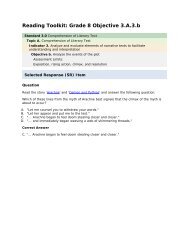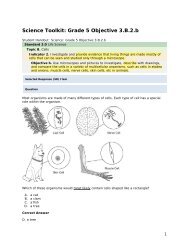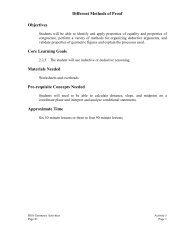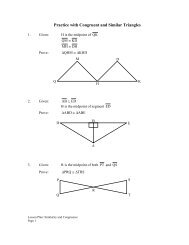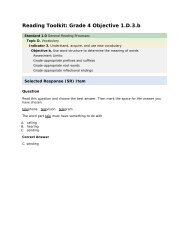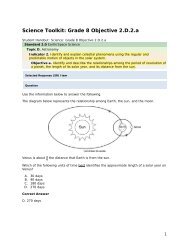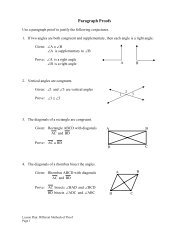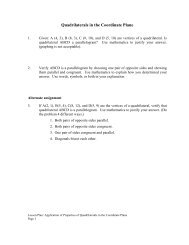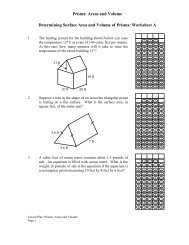HSA Biology Public Release 2005 - mdk12
HSA Biology Public Release 2005 - mdk12
HSA Biology Public Release 2005 - mdk12
Create successful ePaper yourself
Turn your PDF publications into a flip-book with our unique Google optimized e-Paper software.
Session<br />
1<br />
D irections<br />
Use the technical passage below to answer Numbers 10 and 11.<br />
SHORTAGE OF HONEYBEES<br />
Honeybees are very important to agriculture. They produce honey and they pollinate many<br />
plants, making seed and fruit development possible. In recent years, severe weather and<br />
attacks by newly introduced insects have seriously affected both wild and domestic<br />
honeybee populations.<br />
Two species of mites entered North America around 1980. These mites weaken and kill<br />
honeybees by consuming their bodily fluids, blocking their respiratory passages, and<br />
spreading germs. European and South American honeybees developed an immunity to the<br />
effects of these mites. However, North American honeybees did not develop this immunity.<br />
By 1995, infestation with mites reached epidemic levels. In addition, the harsh winter of 1995<br />
to 1996 killed honeybee colonies in many states.<br />
Scientists have observed a significant decline in both wild and domestic honeybee<br />
populations. This loss affects beekeepers and farmers. Fifteen percent of all agricultural crops<br />
require bee pollination. Farmers have had to look for other species to pollinate their crops.<br />
Honeybees are not the only pollinators that have decreased in numbers. Many other insect<br />
and vertebrate pollinators throughout the world have been killed by the overuse of<br />
pesticides and habitat destruction. Many wild plants, including a number of endangered<br />
species, depend entirely on one animal species for pollination. The solutions to this<br />
“pollination crisis” are complex. It is clear that efforts to save threatened pollinators cannot<br />
be separate from efforts to preserve threatened plants and habitats.<br />
<strong>Biology</strong> <strong>Public</strong> <strong>Release</strong> <strong>2005</strong> Page 8<br />
Copyright © <strong>2005</strong> by Maryland State Department of Education.




